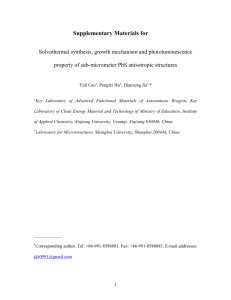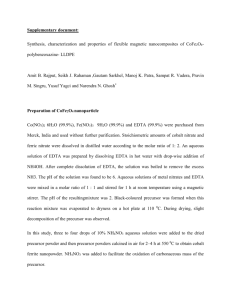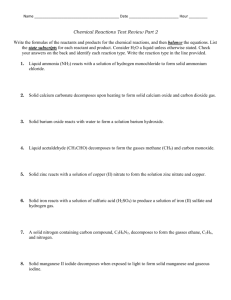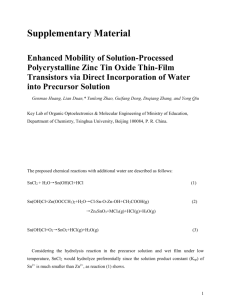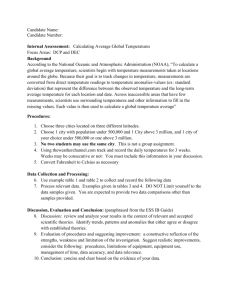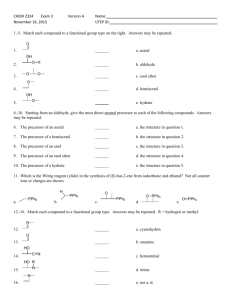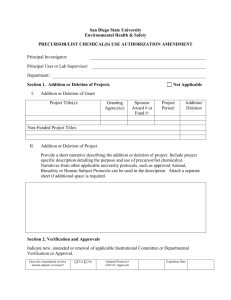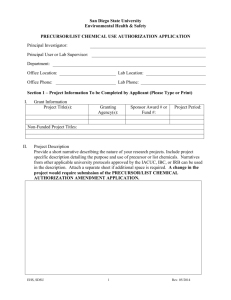SrAl2O4 based phosphorescent Oxides
advertisement
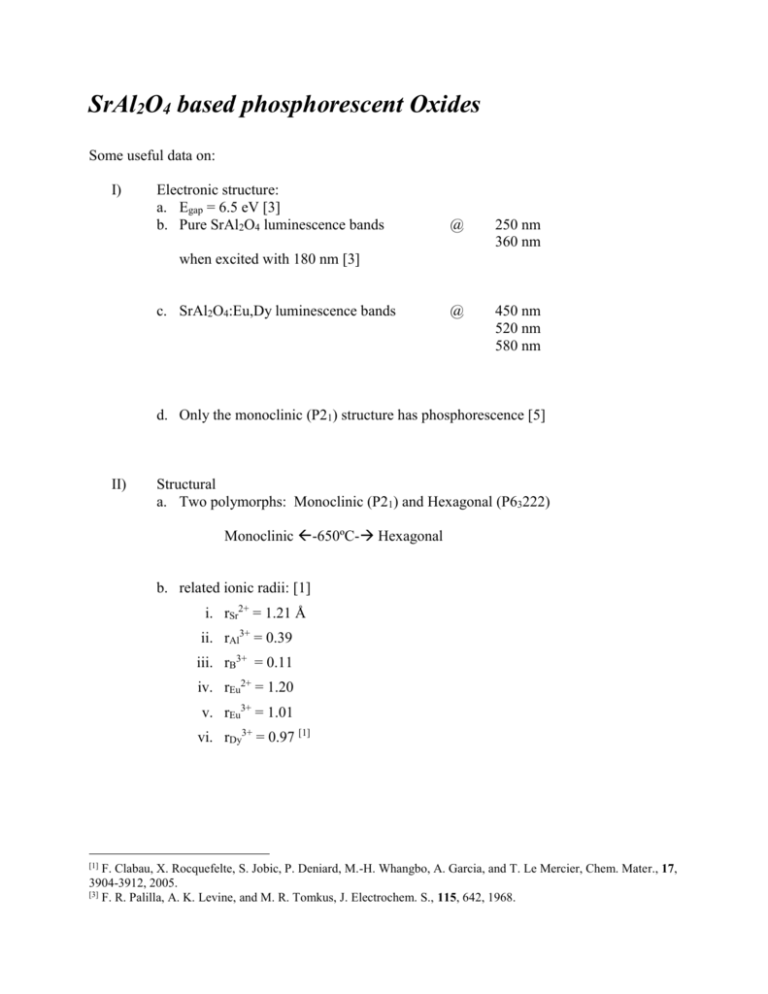
SrAl2O4 based phosphorescent Oxides Some useful data on: I) Electronic structure: a. Egap = 6.5 eV [3] b. Pure SrAl2O4 luminescence bands @ 250 nm 360 nm @ 450 nm 520 nm 580 nm when excited with 180 nm [3] c. SrAl2O4:Eu,Dy luminescence bands d. Only the monoclinic (P21) structure has phosphorescence [5] II) Structural a. Two polymorphs: Monoclinic (P21) and Hexagonal (P63222) Monoclinic -650ºC- Hexagonal b. related ionic radii: [1] i. rSr2+ = 1.21 Å ii. rAl3+ = 0.39 iii. rB3+ = 0.11 iv. rEu2+ = 1.20 v. rEu3+ = 1.01 vi. rDy3+ = 0.97 [1] [1] F. Clabau, X. Rocquefelte, S. Jobic, P. Deniard, M.-H. Whangbo, A. Garcia, and T. Le Mercier, Chem. Mater., 17, 3904-3912, 2005. [3] F. R. Palilla, A. K. Levine, and M. R. Tomkus, J. Electrochem. S., 115, 642, 1968. III) Dopants and their concentration: a. Eu/Sr = 0.05/0.95 molar [2] b. 3-5 m/o (mole percent) for Mg, Sr, Ba-aluminates c. 0.1 m/o for Ca-aluminate d. SrAl1.7B0.3O4:Eu2+R3+ (R3+ = Dy and Nd) IV) Processing Routes: a. Ceramic route: (also called: solid state reaction method) i. High temperature reactions bound by diffusion rates to form the required mixed oxide ii. Repeated firing and grinding cycles to reach phase purity iii. For SrAl2O4 T>1400ºC is required iv. At lower temperatures secondary phases (Sr3Al2O6, SrAl4O7, Sr2Al2O6 (?)) b. Solution polymerization route: i. Use of citric acid and ethylene glycol (Pechini method) ii. At low temperatures we form Sr(NO3)2 iii. Sr(NO3)2 decomposes around 590°C. iv. Sr9Al6O18 phase is formed v. From 800° to 1250°C as T increases the amount of Sr9A3 phase decreases. vi. Small amount of SrAl4O7 may be forming vii. SrCO3 forms within the precursor pre-ceramic viii. SrCO3 decomposes at 1100°C ix. Even boiling the water of solution (to eliminate dissolved carbondioxide) does not eliminate the carbonate formation x. Trying to eliminate the water of solution without burning any part of polymer minimized the Sr-nitrate and Sr-carbonate formation but did not eliminate it completely xi. Afterwards when this precursor is burned at 800ºC, the major peak belonged to SA when it is burned under Ar-gas xii. The best result thusfar is with PVA when the water of solution is first boiled and then the precursor is put in a furnace at 150ºC for two hours and then burn the precursor at 800ºC, almost all SA with some carbonate and Sr9A3 and SA2.let’s go to higher temperatures to form single phase SA with this method. Perhaps we should try the method that produces Sr(NO3)2 at higher temperatures

